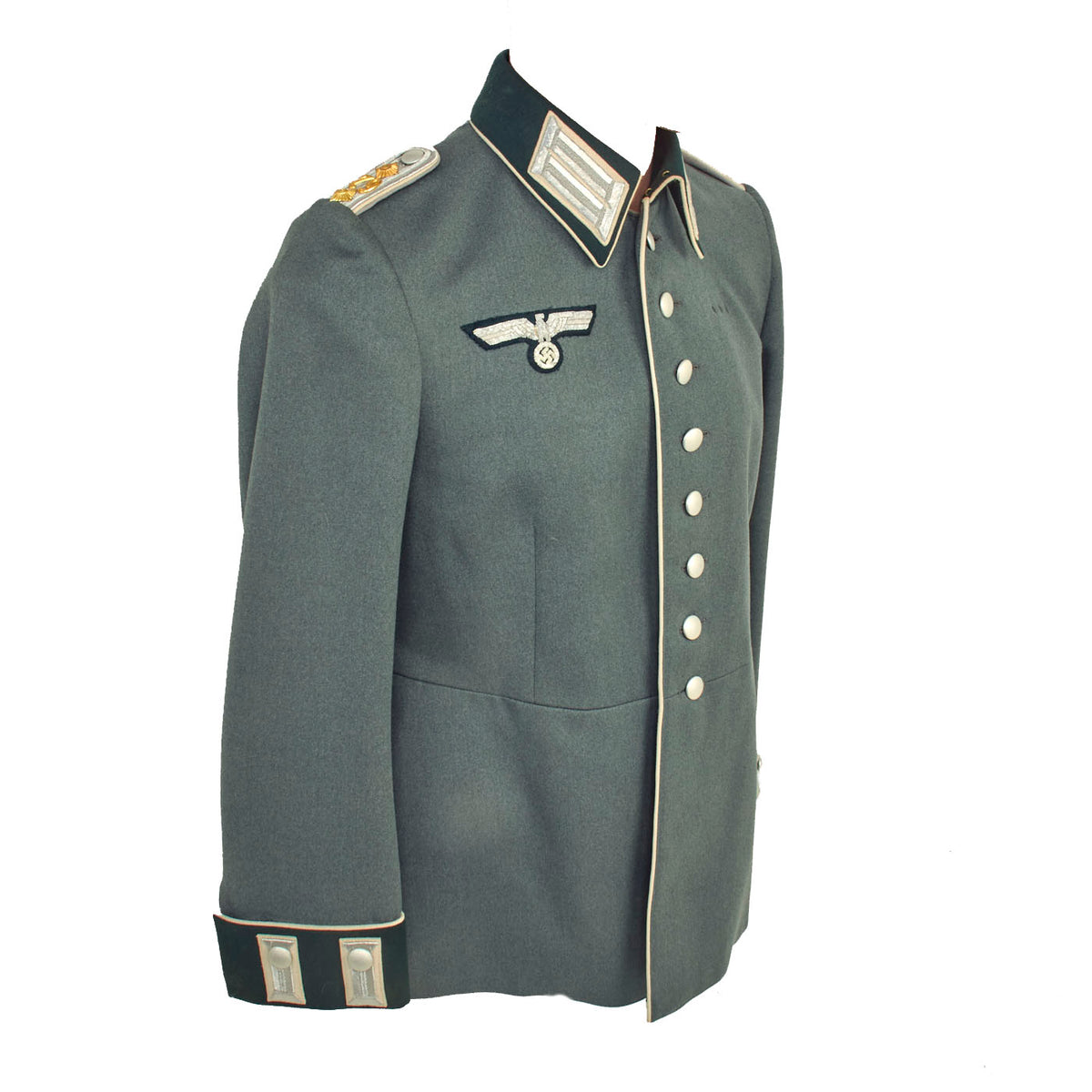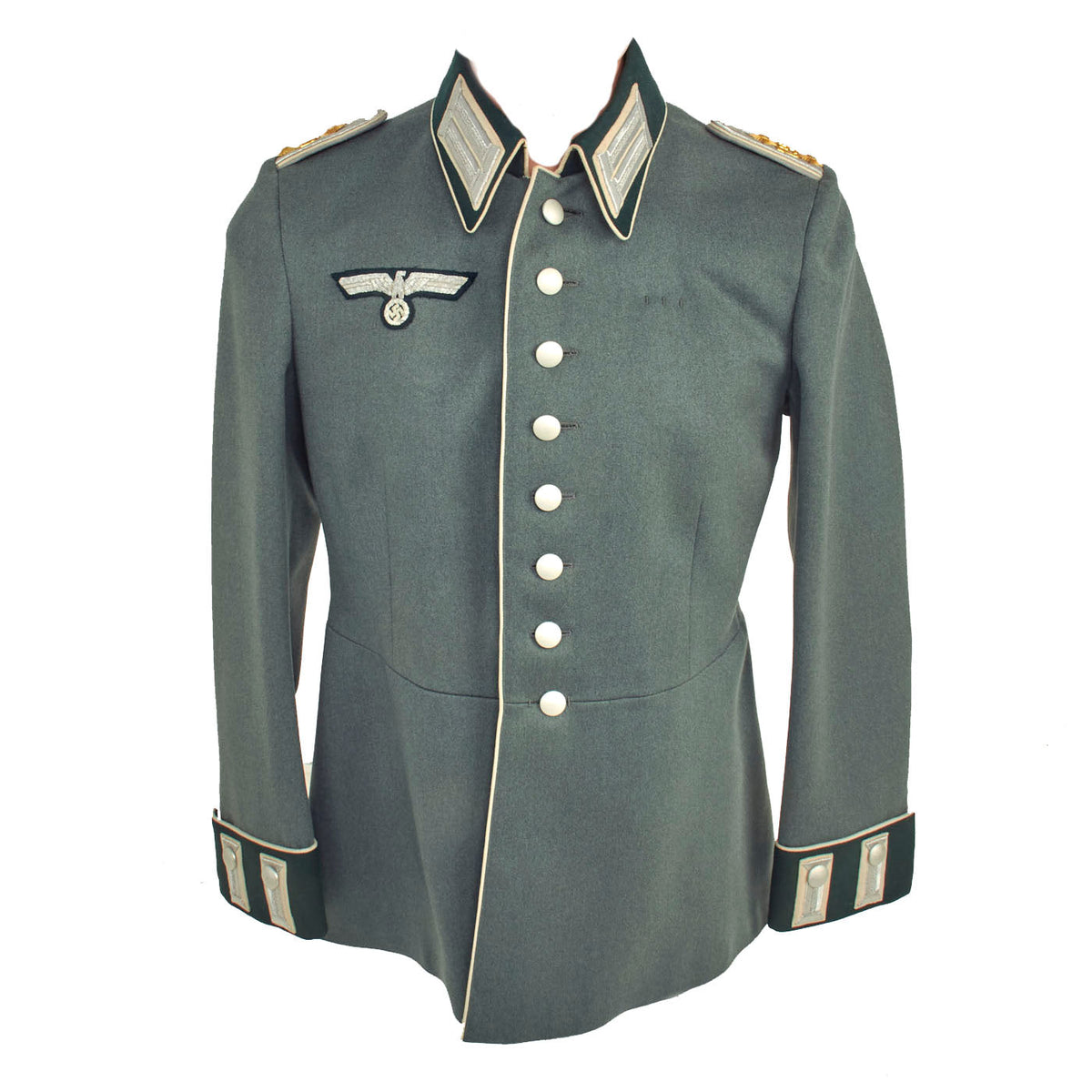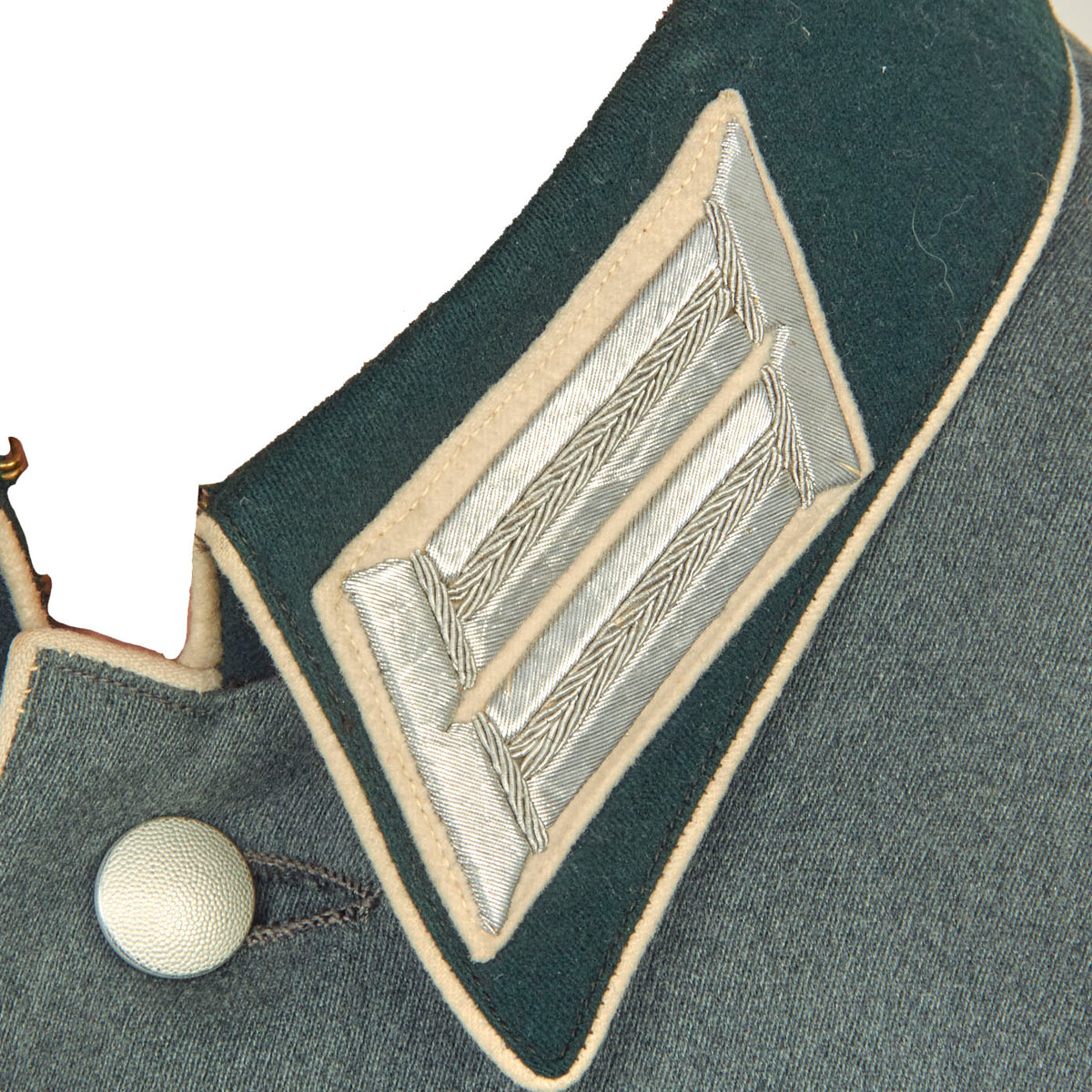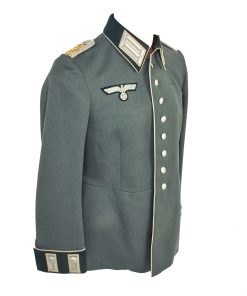Original German WWII Infantry Reserve Officer Hauptmann’s M35 Waffenrock Dress Tunic – Unit Marked Original Items
$ 995,00 $ 248,75
Original Item: One-of-a-kind. The M35 dress tunic was introduced for wear by all ranks on June 29TH 1935 as the walking out, parade and ceremonial dress with the piped, stone grey long pants. The design of the M35 dress tunic was based on the Imperial German army’s service tunic but was a different color and generally of much higher quality. Originally all personnel were issued two M35 dress tunics but manufacture was discontinued in late 1939 or early 1940 and was to be reinstated at the successful conclusion of the war. Regulations of March 21ST 1940 stated that the M35 dress tunics that were no longer suitable for dress wear were to be modified and reissued to personnel of the replacement and reserve units for every day wear. Officers and certain senior NCO ranks were responsible for purchasing their own uniforms and as a result were allotted a clothing allowance through the army’s Kleiderkasse, (Clothing Account), system. The Officers and certain senior NCO’s could choose to purchase their uniforms from the armed forces clothing depots or to privately purchase garments of higher quality. Although enlisted personnel were issued their uniforms from government supplies they were also permitted to purchase privately tailored uniforms although the price may have been restrictive.
This is a beautiful lightly used Heer Infantry Reserve Hauptmann’s (Captain’s) M35 Waffenrock dress tunic, complete with all the correct insignia. The base material of the uniform is made of a fine feldgrau colored wool, and it is lined with gray a cotton-rayon blend. There is no maker marking or other tags inside, so it is most likely bespoke, customized and made for the specific soldier who wore it. The wool shows no signs of any physical damage by misuse, and there is just a bit of wear and pulling on the interior.
The collar is wrapped in dark green “badge cloth” wool and is decorated with insignia and white piping. The base material of the two litzen on each side of the collar opening is Weiß (white), which was the Waffenfarbe (corps color) during WWII for infantry and motorized infantry. The two litzen themselves are woven from a fine silver flatware thread, and are the correct style for an M35 Waffenrock. The collar, and its insignia, are without any noticeable damage or mothing.
The “sew-in” style company officer shoulder boards of this Waffenrock are constructed with two rows of fine silver flatware “Russia Braid” double piping and have the correct white piping around the edges. Under this is a gray secondary color base, which indicates that the officer was in the reserves. Each features two gold pips, which denote the rank of Hauptmann (Captain). Both have gold number 79 unit numbers, most likely for a company or regiment, which we have not been able to identify.
The front breast eagle is a correct officer’s Pattern executed in silver wire. The eagle is without damage and is very neatly hand stitched to the chest in a fashion typical of wartime German tailor work. It is only sewn to the outer layer, so it is definitely original to the tunic. It has however suffered oxidation to the wire, which has given it an overall white color. There are some thread loops on the left breast for the attachment of a medal bar.
Eight silvered buttons adorn the front of the tunic and all appear to be originally attached, with maker markings on the back. The lower French style cuffs of the sleeves have the correct green wool base, and are adorned with the correct white piping and litzen.
This lovely named Heer Infantry Reserve Officer’s Waffenrock comes ready fit medals to and display!
Approx. Measurements:
Collar to shoulder: 8”
Shoulder to sleeve: 23”
Shoulder to shoulder: 16”
Chest width: 18”
Waist width: 17”
Hip width: 19”
Front length: 29″
Fast Shipping with Professional Packaging
Thanks to our longstanding association with UPS FedEx DHL, and other major international carriers, we are able to provide a range of shipping options. Our warehouse staff is expertly trained and will wrap your products according to our exact and precise specifications. Prior to shipping, your goods will be thoroughly examined and securely secured. We ship to thousands clients each day across multiple countries. This shows how we're dedicated to be the largest retailer on the internet. Warehouses and distribution centres can be located throughout Europe as well as the USA.
Note: Orders with more than one item will be assigned a processing date depending on the item.
Before shipping before shipping, we'll conduct a thorough inspection of the items you have ordered. Today, the majority of orders will be delivered within 48 hours. The delivery time will be between 3-7 days.
Returns
The stock is dynamic and we cannot completely manage it because multiple stakeholders are involved, including our factory and warehouse. So the actual stock may alter at any time. It's possible that you may not receive your order once the order has been made.
Our policy is valid for a period of 30 days. If you don't receive the product within 30 days, we are not able to issue a refund or an exchange.
You can only return an item if it is unused and in the same state as the day you received it. You must have the item in its original packaging.
Related products
Uncategorized
Uncategorized
Uncategorized
Uncategorized
Uncategorized
Uncategorized
Uncategorized
Uncategorized
Uncategorized
Uncategorized
Uncategorized
Band of Brothers ORIGINAL GERMAN WWII Le. F.H. 18 10.5cm ARTILLERY PIECE Original Items
Uncategorized
Uncategorized
Uncategorized
Uncategorized
Uncategorized
Uncategorized
Uncategorized













































































